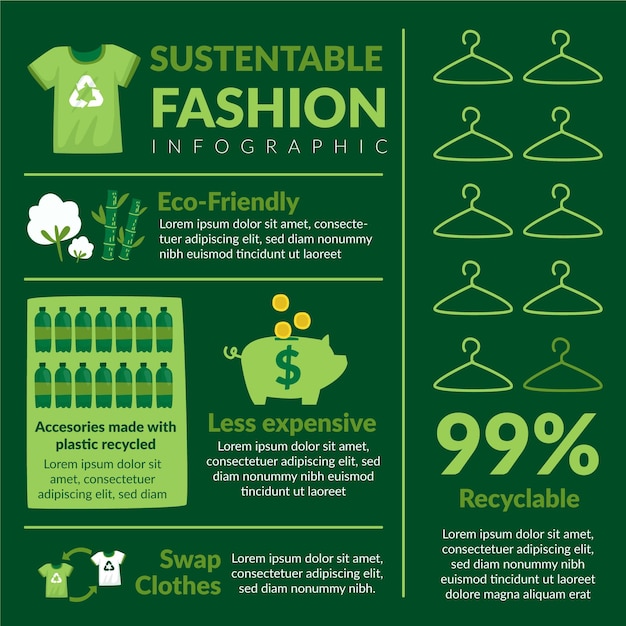The Potential of Cape Town Sustainable Fashion in the Global Market
The Potential of Cape Town Sustainable Fashion in the Global Market
Blog Article
Stay Ahead of the Contour by Checking Out Innovative Style Fads
In a sector as dynamic as style, staying in advance entails greater than simply adhering to existing fads-- it demands an expedition of advancement. Smart textiles, for example, are transforming garments into functional work of arts, while 3D printing is revolutionizing design procedures with its personalized, waste-reducing capacities. As sustainability ends up being a foundation, advancements like eco-friendly materials and round style techniques are improving ecological obligation - Cape Town Sustainable Fashion. Moreover, the merging of modern technology and style advertises a brand-new age of consumer engagement. How, then, can these arising fads redefine the future of style, and what ramifications do they hold for brands looking for to grow in this advancing landscape?

Accepting Smart Textiles
Over the last few years, the fashion business has actually experienced a transformative shift with the integration of clever textiles, an advanced innovation that blends technology with textile. This development stands for not only a blend of looks and functionality yet additionally a significant jump in the direction of sustainability and customization in style. Smart fabrics, also called e-textiles, installed advanced electronic devices such as sensors and conductive threads within the material, allowing garments to communicate with the user or the setting.
These fabrics are created to monitor physiological parameters, such as heart rate or body temperature, supplying real-time health analytics. Beyond health applications, smart textiles are also being utilized for flexible garments, which can change shade or pattern in action to environmental stimuli, thus supplying a vibrant fashion experience.
In addition, the growth of energy-harvesting fabrics that generate power from motion or sunlight is leading the way for self-dependent wearable modern technology. This technology is attracting ecologically conscious customers and designers intending to reduce the environmental footprint of fashion. As r & d in this area advancement, smart fabrics are anticipated to become progressively widespread, improving the landscape of modern-day fashion with their multifunctional capacities.
The Increase of 3D Printing
Transforming the manufacturing landscape, 3D printing has actually arised as a game-changer in the apparel industry. This sophisticated modern technology has actually allowed developers to push the boundaries of creative thinking, generating complex and tailored garments that were formerly unimaginable. By leveraging electronic layout and additive manufacturing, 3D printing promotes the creation of complicated geometries and patterns, enabling designers to experiment with new structures and structures.
A significant benefit of 3D printing in style is its ability to produce on-demand, reducing waste and lowering supply requirements. This efficiency not only maximizes production processes but also enables rapid prototyping, allowing developers to bring their visions to life in a shorter duration. Furthermore, 3D printing sustains personalization somewhat unparalleled by conventional approaches, providing individualized fits and special styles customized to individual customer preferences.
The increase of 3D printing has additionally democratized fashion, making it easily accessible to emerging developers that can now fabricate premium pieces without considerable financial investment in standard manufacturing framework. As technology remains to advancement, the fashion sector is positioned to harness the full possibility of 3D printing, discovering brand-new materials and strategies that will most certainly redefine just how fashion is conceived and created.
Sustainable Fashion Developments
As the apparel industry faces journalism need for environmental duty, sustainable style technologies have actually emerged at the forefront of transformative adjustment. The growing understanding of eco-friendly effect has sustained a change in the direction of more eco-conscious methods and materials. Designers and brands are currently prioritizing sustainability, integrating methods that reduce waste and reduce carbon footprints.
One significant advancement is the surge of circular style, which highlights recycling and upcycling to prolong the lifecycle of garments. This strategy not only decreases waste yet likewise encourages customers to adopt an extra conscious strategy to clothing intake. Furthermore, making use of sustainable materials, such as organic cotton, hemp, and recycled polyester, has actually gotten traction. These products call for much less water and power throughout manufacturing, dramatically reducing environmental influence.
One more development exists in the adoption of innovative dyeing techniques that utilize natural dyes or waterless procedures, therefore lowering the large amounts of water and chemicals traditionally made use of in fabric dyeing. In addition, developments in biotechnology have actually brought about the creation of lab-grown leather and textiles, offering eco friendly and cruelty-free choices to traditional products. With these pioneering initiatives, the apparel industry is making significant strides towards a much more lasting future.

Tech-Integrated Apparel
Tech-integrated garments represents an innovative blend of style and modern technology, reshaping how individuals communicate with their clothes. This innovative domain name is marked by the incorporation of wise textiles and embedded digital parts, enhancing both functionality and visual allure. From fitness trackers embedded in sportswear to warmed coats controlled using mobile phone apps, tech-integrated garments provides customers unmatched convenience and versatility.
Introducing brands are driving this pattern, concentrating on producing garments that respond to environmental stimuli or customer commands. For instance, some garments can change color or pattern in action to temperature changes, while others incorporate biometric sensors to check health metrics like heart rate or anxiety degrees. The smooth integration of innovation into fabrics also extends to environmental sustainability, with efforts to create self-cleaning fabrics or garments that readjust to weather conditions, hence decreasing the need for multiple layers.
Moreover, the development of wearable technology is not just limited to clothing yet expands to devices like watches and glasses, additional broadening the range of tech-integrated fashion. As the market proceeds to introduce, the capacity for personalization and personalization in garments grows, offering customers one-of-a-kind, tech-enhanced style experiences that provide to their specific requirements and preferences.
Future of Virtual Fashion
Recently, the future of online style has arised as a transformative pressure useful content within the industry, leveraging improvements in digital innovation to redefine exactly how style is developed, experienced, and eaten. By incorporating augmented fact (AR), virtual fact (VR), and 3D layout tools, developers can now craft interactive and immersive experiences that transcend typical fashion borders. Virtual style allows for the production of garments that exist solely in electronic settings, providing countless opportunities for development without the constraints of physical production.
This digital change not only offers opportunities for imaginative expression but additionally addresses sustainability issues integral in traditional style practices. Cape Town Sustainable Fashion. Going Here By getting rid of the need for physical sources, virtual fashion minimizes waste and minimizes carbon footprints. Furthermore, the increase of digital fashion lines up with the increasing customer demand for special and individualized experiences, as digital garments can be personalized and customized to individual preferences effortlessly

Verdict
The apparel industry's future lies in the assimilation of ingenious technologies and sustainable techniques - Cape Town Sustainable Fashion. Smart fabrics and tech-integrated apparel are boosting performance, while 3D printing offers possibilities for personalization and waste reduction. Lasting style, with circular strategies and environment-friendly products, shows a commitment to environmental stewardship. Furthermore, online style is poised to redefine customer communications. Adapting to these fads is necessary for brands looking for to stay competitive and pertinent in this swiftly progressing landscape.
In recent years, the style market has experienced a transformative change with the combination of smart fabrics, a sophisticated technology that mixes technology with fabric.As the fashion industry grapples with the pressing requirement for environmental duty, sustainable style innovations have emerged at the center of transformative modification.In recent years, the future of online fashion has emerged as a transformative pressure within the market, leveraging developments in electronic innovation to redefine exactly how fashion is produced, experienced, and consumed. The surge of digital fashion aligns with the boosting customer demand for individualized and special experiences, as virtual garments can be customized navigate to these guys and customized to private preferences with ease.
The style industry's future lies in the combination of cutting-edge modern technologies and sustainable techniques.
Report this page